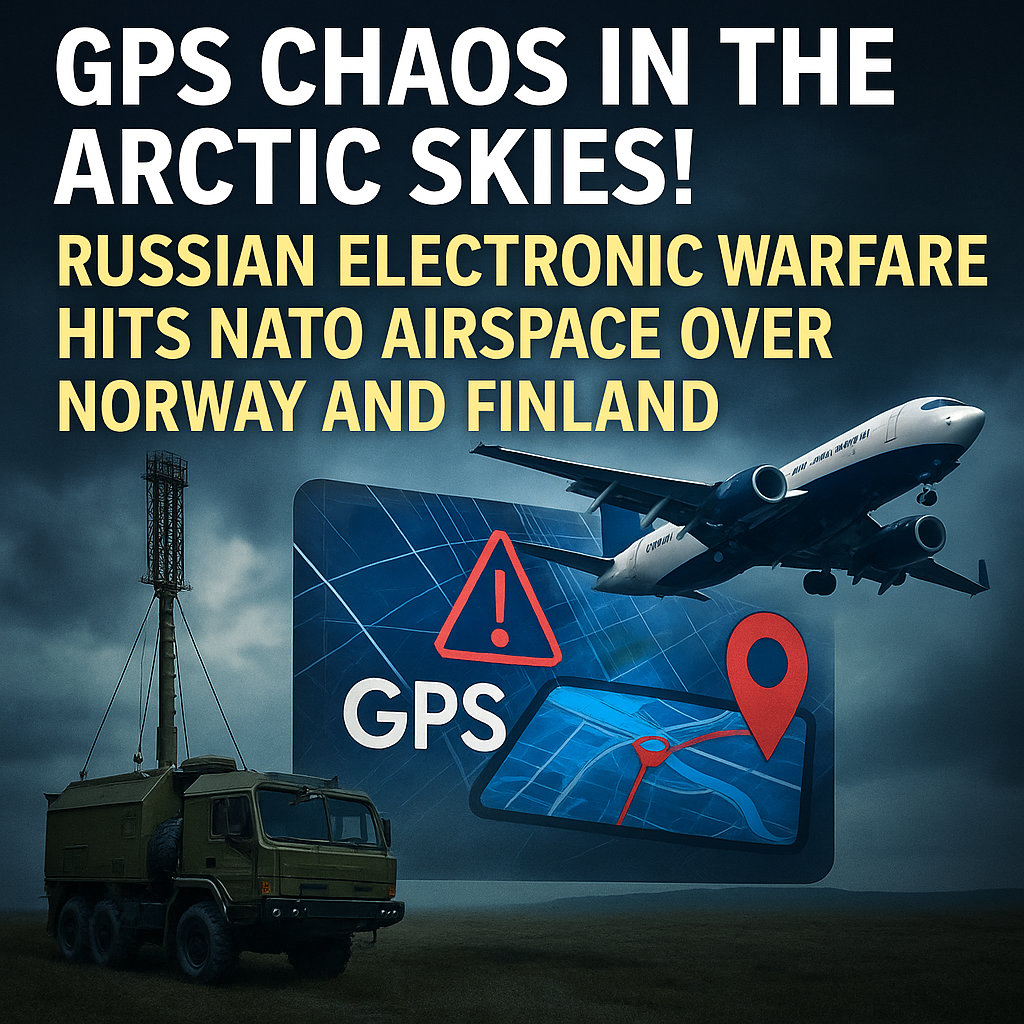Something strange has been happening in the arctic skies over northern Norway and Finland. Pilots flying over these cold, remote areas are suddenly finding that their GPS systems—used to help guide planes safely—aren’t working properly. Sometimes, the GPS is simply jammed, making it useless. Other times, it tells pilots they are in a totally different place. This is called spoofing. And it’s dangerous.
These problems aren’t random. Experts believe they are caused by Russian electronic warfare (EW) systems on the Kola Peninsula, a military-heavy part of Russia that’s close to Norway. These systems send out strong signals that can mess up or trick satellite-based equipment like GPS in the arctic skies. This type of warfare has been going on quietly for years. But since the end of 2024, it’s gotten much worse—especially around East Finnmark in Norway, which is only about 55 kilometers from Russia’s Pechenga region.
The increased interference appears linked to the wider conflict between Russia and Ukraine. Russia is using these high-tech tricks not only to protect its military bases from Ukrainian drone attacks but also to send a message to NATO: don’t get too close.
Drones, Bombers, and the Fight over GPS
The Ukraine war has changed a lot about how countries fight. One of the biggest changes is how both sides use drones. These flying robots, often small and cheap, can now travel long distances and hit big targets. In July 2024, Ukraine shocked many by hitting Russia’s Olenya airbase with drones. This base, located on the Kola Peninsula, is used to launch bombers that strike Ukrainian cities. The attack damaged at least one Russian bomber and showed that Ukraine could reach far behind enemy lines.
Orbital Ambush? Russian Satellites Move Like Predators Around U.S. Target in Space
Since then, there have been more drone attacks, including a big one on June 1, 2025, where Ukrainian drones destroyed several Russian planes. This time, drones were launched from a spot only 6–7 kilometers away from the base, suggesting they were controlled by sight and not GPS. That’s likely because Russia has been using powerful EW tools to jam or spoof GPS signals, forcing Ukraine to switch to visual targeting.
To fight back, Russia has started using tricks of its own. It now hides its aircraft or makes them look different by putting tires on top of them. This confuses the drones, which sometimes rely on image recognition to find targets. Despite these defenses, Ukraine’s attacks have still caused damage, and this has made Russia even more determined to jam any signals that might help drones find their way.
Russian Disruptions in Arctic Skies
The Russian military has a long history of using electronic warfare. Since 2014, it has deployed many types of equipment that can block or trick satellite and radio signals. In the High North, Russia has at least three major systems that are likely causing the problems for civilians in Norway and Finland.
One is the Zhitel jammer, a mobile device that can block satellite and mobile phone signals over a short distance in the arctic skies. Another is the Krasukha-4, which can disrupt radar and satellite systems from 150 to 300 kilometers away. This system has reportedly been used in past conflicts, like in Syria. The third is the Murmansk-BN, a massive system that can reach as far as 5,000 kilometers and interfere with radio and satellite communications across all of Scandinavia.
Romania’s GPS Crisis: Military Sounds Alarm on Russian Electronic Warfare Escalation
These systems are probably being used together from Russian military bases near the border. One known area is Pechenga, where Russia has two military brigades that regularly send out EW signals in the direction of Norway. These signals can interfere with navigation for airplanes, boats, and even emergency services, creating serious safety issues in regions already hard to navigate due to weather and terrain.
By early 2025, the interference had become so strong that pilots landing in Kirkenes, a town in Norway near the border, were no longer trusting their GPS. Some even stopped using it altogether when preparing to land, relying instead on older, less advanced systems. This shows just how much the situation has worsened.
Russia’s use of electronic warfare in the High North—while part of its defense against Ukrainian drones—is now affecting everyday life in peaceful countries. Commercial flights, maritime traffic, and even cell phone signals are being impacted. This conflict, once far away, is now reaching into the skies and systems of NATO countries, creating risks that are hard to ignore.




